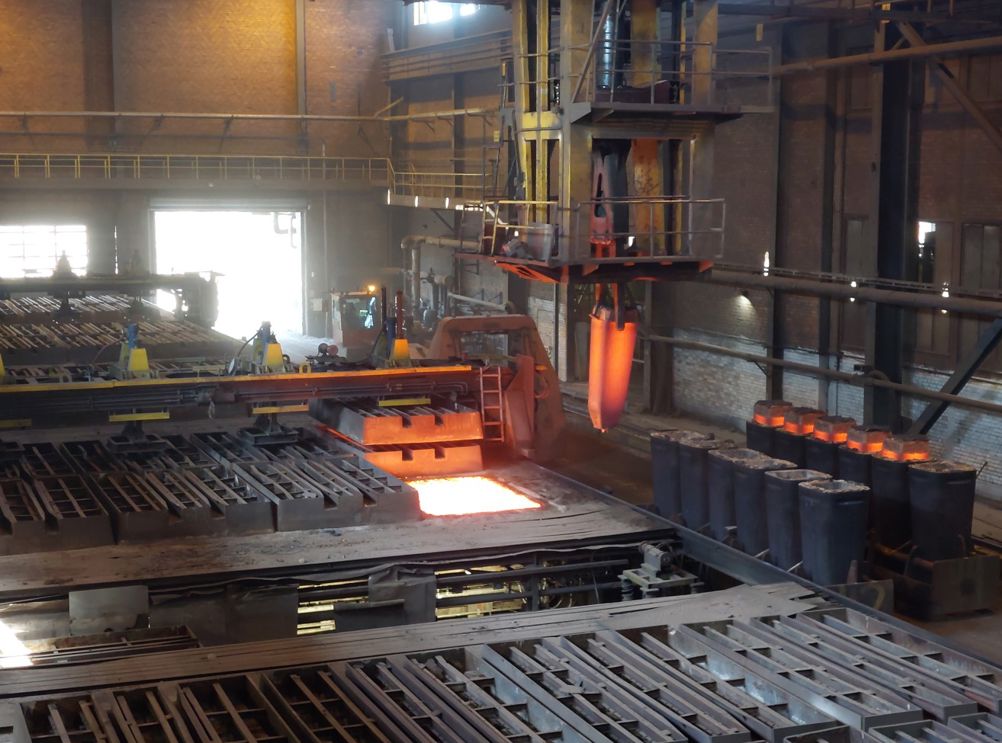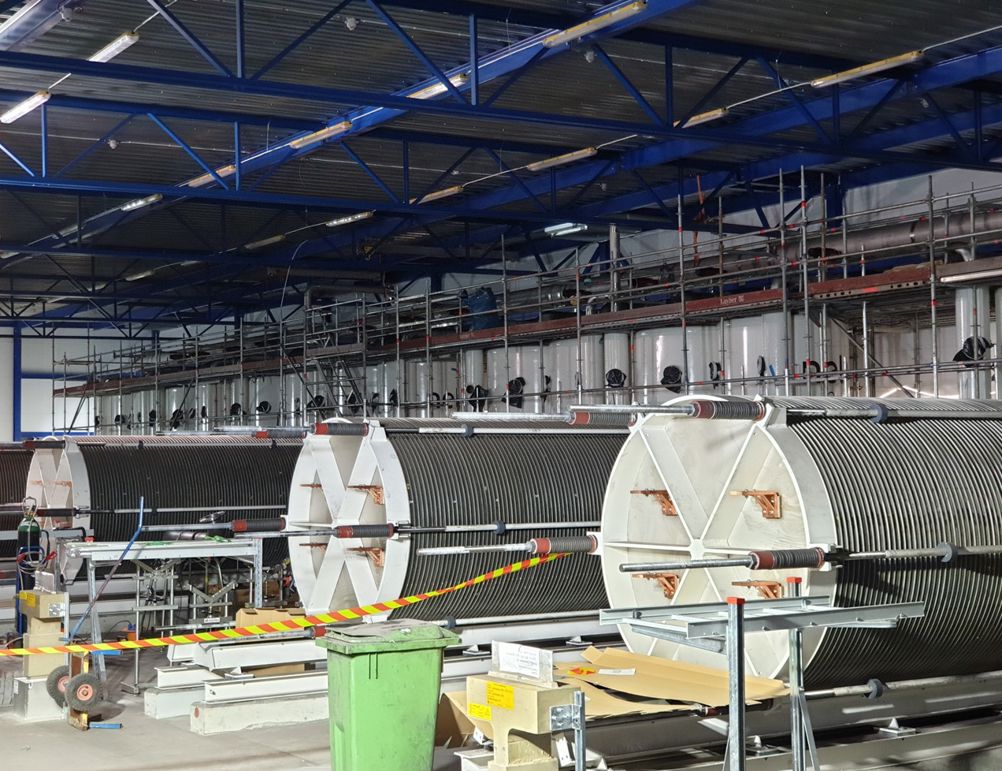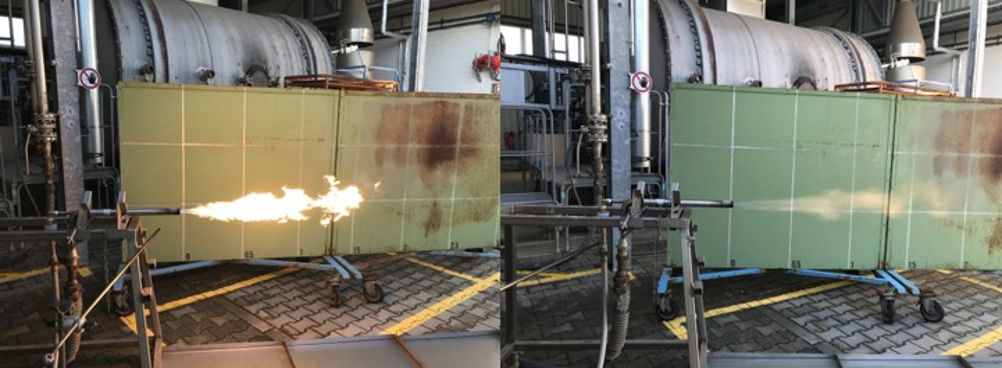Key to the manufacture of everything from wind turbines to electric vehicles, steel is a critical building block of the green revolution. However, its starring role in our low carbon future is somewhat undermined by the fact that the processes used to produce it account for a large chunk - around seven per cent - of global CO2 emissions.
In response, steelmakers around the world are exploring a range of technologies and processes that could soon be used to replace existing carbon-intensive methods.
One company leading the charge is Swedish firm Ovako, a trailblazer in sustainable steel production which is now poised to fire up the world’s first hydrogen-fueled steel mill at its facility in Hofors, a small town in central Sweden around 200km north of Stockholm.
Operating from nine production sites across Europe (primarily in Sweden) Ovako - a subsidiary of Japan’s Sanyo Special Steel since 2019 - makes a range of high-performance steel products for sectors including automotive, mining and energy.
For more than a decade the company has been slashing away at its emissions, with much of its key equipment - from the giant electric arc furnaces that melt the scrap steel used to make its products, to the heat treatment furnaces used to introduce specific properties - now entirely electrified and powered by Sweden’s plentiful supply of fossil-free electricity. These activities saw the company reduce its operational CO2 emissions by 57 per cent (from 485 000 to 210,000 tonnes of CO2 per year) between 2015 and 2021.
Whilst additional offsetting measures mean that the firm is now officially carbon neutral, it expects to scale back its reliance on offsetting as further process improvements come online, and the Hofors Hydrogen project marks the start of a push that’s expected to get those emissions reductions down to 80 per cent of the 2015 baseline figure by the end of the decade.

Described by Ovako’s Sustainability specialist Vendela Stenius as the “icing on the cake” of its decarbonisation plans, the new facility - which is expected to be up and running later this summer - will produce hydrogen for fueling the furnaces used for the Hofors plant’s hot forming operations. The hybrid system developed by the team will enable the facility to switch seamlessly between the current propane-oxygen mix and an emissions-free hydrogen-oxygen mix.
The plant will use a giant 20MW array of electroysers to produce 3,500 cubic meters of fossil-free hydrogen per hour and is expected to halve existing CO2 emissions at Hofors.
Meanwhile, plans are underway to roll out the technology across Ovako’s other facilities, with construction of a second plant already underway at its production site in Smedjebacken, approximately 60km south west of Hofors. “We’re doing it as a startup here in Hofors and will then copy and paste it to all the other plants,” said Mikael Persson, Ovako’s project manager for hydrogen.
The project began back in 2019, when Ovako joined forces with industrial gases giant Linde to develop and demonstrate a technical proof of concept. In March 2020, the two companies performed the world’s first fossil-free heated steelforming operation, during which metal alloy was heated to 1200oC using hydrogen instead of LPG (liquefied petroleum gas) before rolling at the mill in Hofors.
With subsequent tests indicating that heating with hydrogen does not negatively affect the quality, the project quickly gathered pace and Ovako enlisted the help of electrolyser manufacturer NEL and Hitachi Energy, which has developed the control system for the new plant.
At the heart of the facility, is a giant 20MW electrolyser array situated in an adjacent hall to the steel heating furnaces and comprised of eight separate electrolyser modules. A scaled-up version of existing off-the-shelf technology, this plant uses fossil-free electricity to split purified drinking water into hydrogen and oxygen, which are then combined into oxyfuel for injection into the furnace.
Although there is a small buffer storage tank – able to contain around 30 minutes worth of hydrogen production - the plant is designed to produce hydrogen when it’s required, deploying a smart control system to switch between hydrogen and propane oxyfuels.

“The aim is to produce and use hydrogen at the same pace….and to use a smart control system to switch between fuels”, said Ovako furnace engineer Anders Lugnet. “This is the trick to having it working. Rather than a huge storage tank - which is very expensive - we have a really tiny storage tank and a smart software system.” It’s important to note that a series of production trials carried out earlier in the project confirmed that switching fuels in this fashion has no impact on the hot rolling process or the quality of hot rolled steel.
Developing the hardware for the system has, said Persson, been surprisingly straightforward from an engineering point of view, with just some minor changes to the valves required and the same mechanisms and fuel delivery systems used for both fuels. “This is the magic about it,” he said, “we have the same mechanical equipment in the process, we just have a switch where we can close that one and open that one…. we will automatically switch between the fuels depending on the energy needs.”
Perhaps the biggest area of innovation has been the development of a smart control system able to account for the differences between the two fuels. “The conversion of furnaces from a propane-oxygen mix to a hydrogen-oxygen mix is not straightforward as propane molecules have significantly more energy than hydrogen,” explained Ovako’s head of sustainability Katarina Kangert. “Before starting work on our hydrogen electrolysis plant, we developed a control system to switch between hydrogen and propane seamlessly without interrupting furnace operations.”
Another key challenge has been carrying out the vast amount of risk assessment required to integrate a hydrogen production facility within a steelworks. The team has had to consider and explore the implications of every possible eventuality, said Persson, using tools such as Computational Fluid Dynamics (CFD) to simulate the flow of ventilation around all of the buildings, and also to simulate the flow of any potential hydrogen leakages. This information has been used to help design in multiple levels of redundancy to eliminate any risk of ignition.

For a project that only began life just a few short years ago, the Hofors Hydrogen plant has taken shape exceptionally quickly: an impressive achievement given the strict safety standards governing the industry, not to mention the unhelpful arrival - in 2020- of COVID19.
Persson and the team are keen to underline the important role that collaboration with other project partners has played in getting to this point, and also the way in which continued collaboration will be key to tapping into the broader carbon-busting potential of hydrogen. Indeed, alongside NEL and Hitachi, other partners on the Hofors project include Volvo Trucks - which is using lessons from the initiative to inform work on hydrogen fuelled commercial vehicles and Swedish startup H2Green Steel, which is hoping to accelerate the development of green steel production methods.
And despite operating in a fiercely competitive market, the project team is even keen to share its knowledge with other steelmakers. “We talk to each other and we share a lot of knowledge,” said Stelnius. “We try to get the whole industry to get better, we also share knowledge with other steelmakers.”
Being at the forefront of such a pressing challenge, and helping to make a meaningful impact on global greenhouse gas emission is, she added, an exciting place to be: “It’s inspiring and so good that people are listening to us and watching us because we can spread the word and help drive down emissions worldwide. ”
More on low-carbon steel












Guest blog: exploring opportunities for hydrogen combustion engines
"We wouldn't need to pillage the environment for the rare metals for batteries, magnets, or catalisers". Batteries don't use rare...